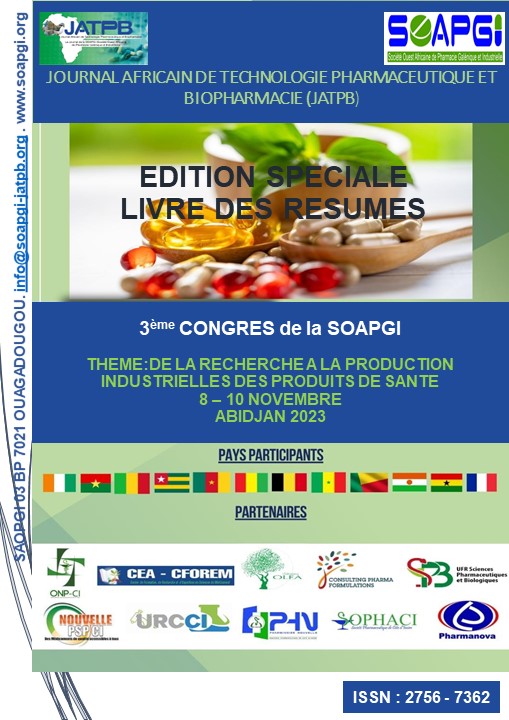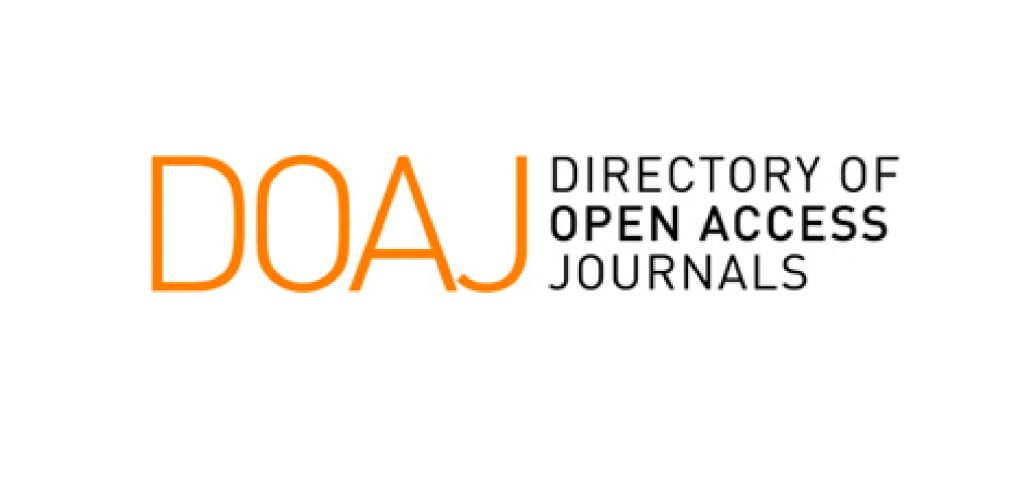C34 Formulation of shea butter-based lipid nanoparticles for topical and transdermal applications
DOI :
https://doi.org/10.57220/jatpb.v2i3.127Mots-clés :
Shea butter, lipid-based nanoparticles, gel.Résumé
Introduction: Shea butter is a natural lipid widely used in topical formulations because of its hydrating, anti-inflammatory and regenerative properties on the skin. The aims of this study was to develop lipid- based nanoparticles using local shea butter as building material for topical and transdermal applications. Methods: The nanoparticles of shea butter were made using three different processes (high shear homogenization, phase inversion temperature or solvent injection techniques. The formulation factors were optimized. The obtained nanoparticle suspensions were evaluated for particle size using dynamic light scattering, polydispersity index, zeta potential and physicochemical stability. Subsequently the aqueous colloidal suspension obtained by high shear homogenization technique was converted into a gel by adding 0,5 % Carbopol 980NF (polymer) as a gelling agent and subsequent neutralization with sodium hydroxide. The gel formulations were investigated for pH and viscosity measurements at day
- The viscosity was assessed at 26°C using a rotational viscometer STS-2011 (shear rate of 2 s-1, spindle n°R4, 10 rpm).
Results: The optimized conditions make it possible to obtain nanoparticles with average sizes of 54.1 ±
5.0 nm, 99.1 ± 1.0 nm and 161.5 ± 4.4 nm, when the phase inversion temperature, high shear homogenization or the solvent injection techniques were respectively used. All optimized formulations
showed a narrow size distribution and the zeta potential values were between -20 and -38 mV depending on the technique used. The three colloidal suspensions were considered physically stable at room temperature for at least three months as no significant changes in mean size, polydispersity index or zeta potential values were observed. The gel formulations exhibited viscosities of 32 800 ±100 mPa.s with pH values of 5,0 ± 0,5.
Conclusion: In order to evaluate their potential as a new carrier system for skin delivery and as a follow- up to these promising initial results, morphological analysis of the nanosystems and evaluation of their encapsulation capacity are in progress, before in vitro skin permeation and retention studies are considered.
Téléchargements
Publiée
Comment citer
Numéro
Rubrique
Catégories
Licence
(c) Tous droits réservés B. Gérard Josias YAMEOGO, Carmen F. W. KABORE, B. Charles SOMBIE, Hermine ZIME DIAWARA, Denis WOUESSIDJEWE, Rasmané SEMDE, Annabelle GEZE 2023

Ce travail est disponible sous la licence Creative Commons Attribution 4.0 International .






